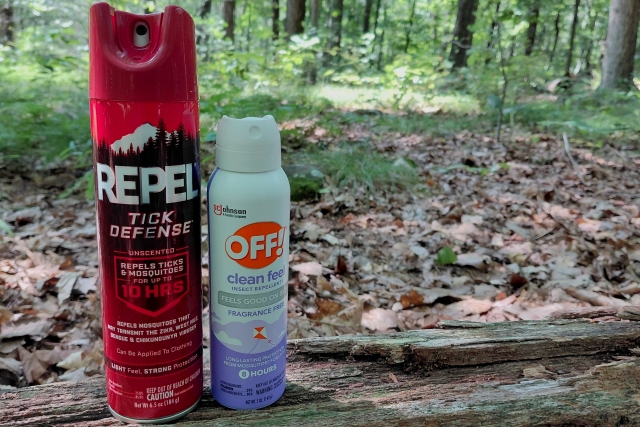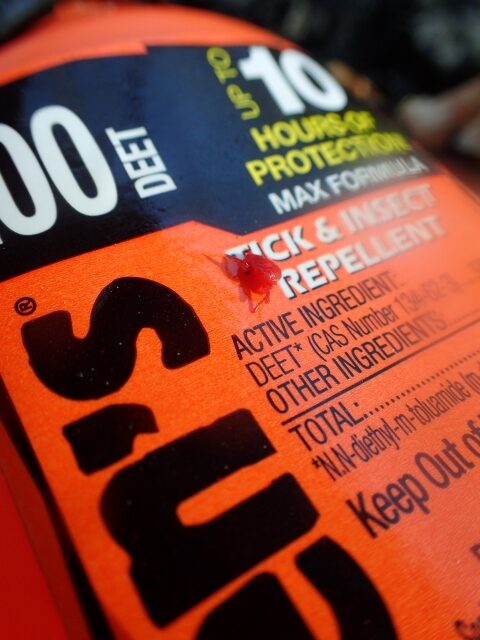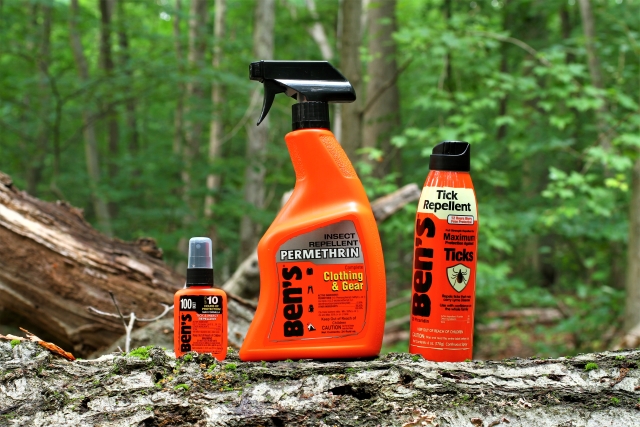
While summer is halfway over, there’s still plenty of time to get eaten alive. Picaridin vs DEET: which would you pick? And what do we know about each one?
Picaridin vs DEET: What You Need to Know
DEET: The Go-To Legend
DEET is the unscented guardian that keeps biting insects at bay. Developed for the military in the 1940s and unleashed on civilians in the ’50s, it works by jamming the receptors bugs use to detect human scent, turning you into an olfactory ghost on their radar. When comparing Picaridin vs DEET, DEET’s history adds to its credibility.
Its strength lies in versatility. DEET repels mosquitoes, ticks, fleas, and other insects, and lasts anywhere from 2 to 12 hours, depending on the concentration. For a short evening stroll, 10% is plenty; for a sweaty jungle slog, the 30–100% range pulls its weight. Higher concentrations don’t repel better—they just stick around longer.

It plays nicely with most synthetic fabrics but can melt plastics, like a sci-fi acid spill, so it’s best to keep it off watch faces, eyeglass frames, and camera gear. Although some prefer alternatives like Picaridin or lemon eucalyptus, DEET remains the go-to option when the goal is not to become part of the local bug buffet.
The Newbie and Challenger: Picaridin
Picaridin is a synthetic insect repellent that works similarly to DEET but with a cleaner finish. It’s derived from compounds found in pepper plants, though there’s nothing spicy about its scent or texture—it’s nearly odorless and leaves your skin feeling like skin, not a chemical slip’n slide. This comparison reveals how Picaridin’s texture stands out.
What does it do best? Picaridin repels mosquitoes, ticks, biting flies, and other airborne pests with impressive stamina. A 20% concentration guards you for up to 12 hours, making it ideal for long treks, backyard grilling sessions, and everything in between. Unlike DEET, it won’t melt your sunglasses or camera grip—it’s friendly to plastics, synthetics, and gear you’d like to keep intact.
It also has a knack for subtlety. No heavy scent, no greasy film, and fewer skin reactions compared to the older crowd. That makes it a favorite for kids, folks with sensitive skin, and anyone who wants serious protection without broadcasting “I just sprayed myself silly.”
When the bugs show up uninvited, Picaridin keeps them at the gate—quietly, effectively, and without the drama.
Picaridin vs DEET
DEET and Picaridin both stand tall as effective insect repellents, but they differ in pedigree and personality. DEET, the old warhorse, was born in 1946 for the U.S. Army and has decades of bug-swatting credibility. Picaridin entered the scene much later, in 2005, inspired by compounds found in pepper plants. While DEET paved the way, Picaridin brought a smoother style. Each repellent has unique strengths.

Performance-wise, they’re on par—each repels mosquitoes and ticks with gusto. DEET can guard you for up to 12 hours, depending on concentration; Picaridin matches that at just 20% and often performs better against flies. It’s the low-key contender with high-grade punch.
When it comes to feel and fragrance, DEET has a greasy texture and an unmistakable lab-coat aroma. Picaridin, on the other hand, is nearly scentless and far more civilized on the skin. If your gear matters, DEET might not be the best hiking buddy—it can dissolve plastics like a disgruntled villain. Picaridin is gear-safe, making it ideal for photographers, campers, and anyone who values their sunglasses.
Safety-wise, both products have received approval for use on children over two months old and generally tolerate them well. Picaridin edges ahead in terms of skin-friendliness, with fewer reported irritations.
Conclusion: Pick Your Fighter, Picaridin or DEET
Ultimately, DEET is the seasoned veteran, proven effective in every swamp and jungle. Picaridin is the sleek newcomer, equally challenging but far more polite. If you value gear compatibility and subtlety, Picaridin deserves a spot in your pack.
As for me, I’m sticking with Picaridin!



